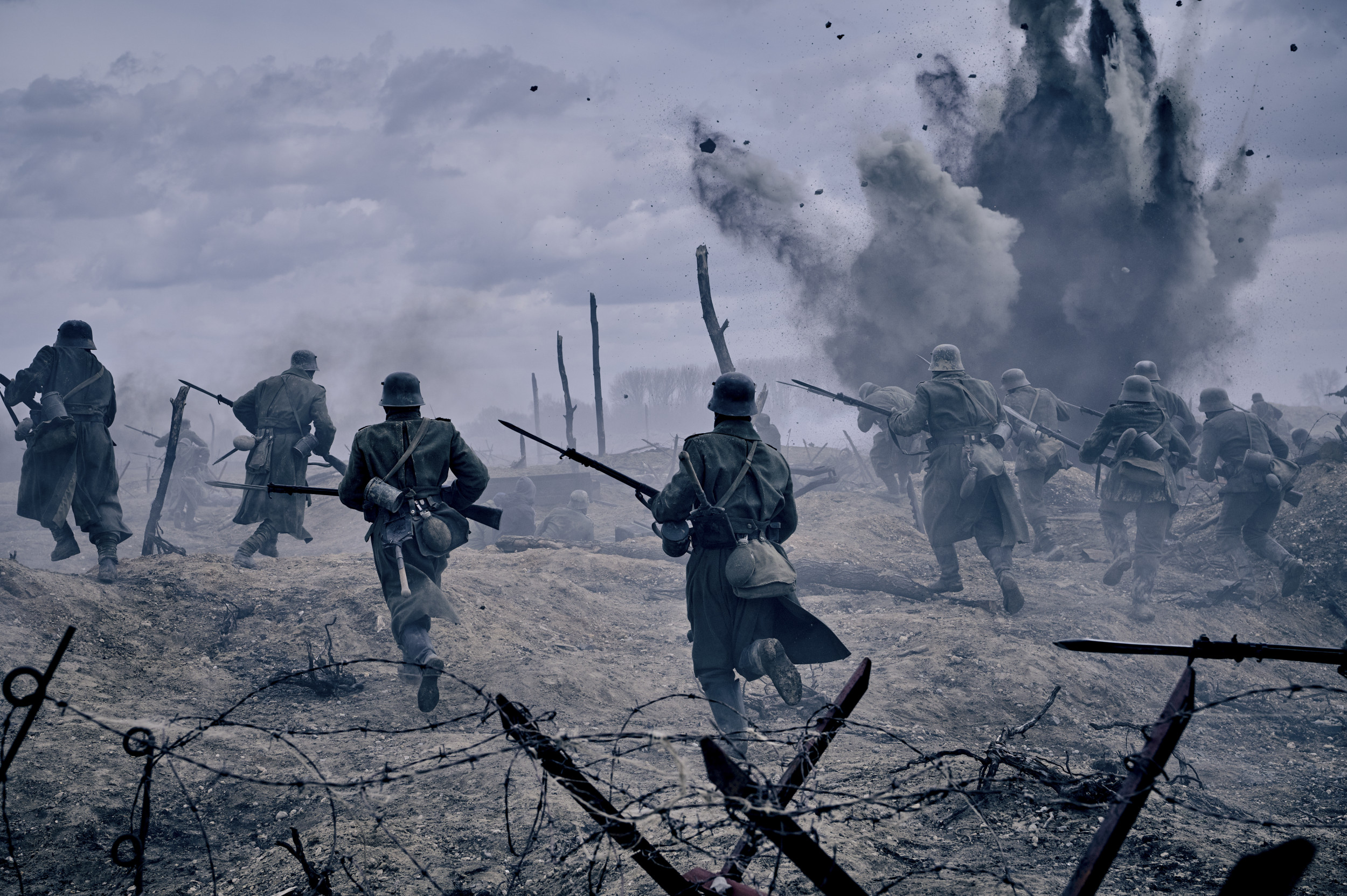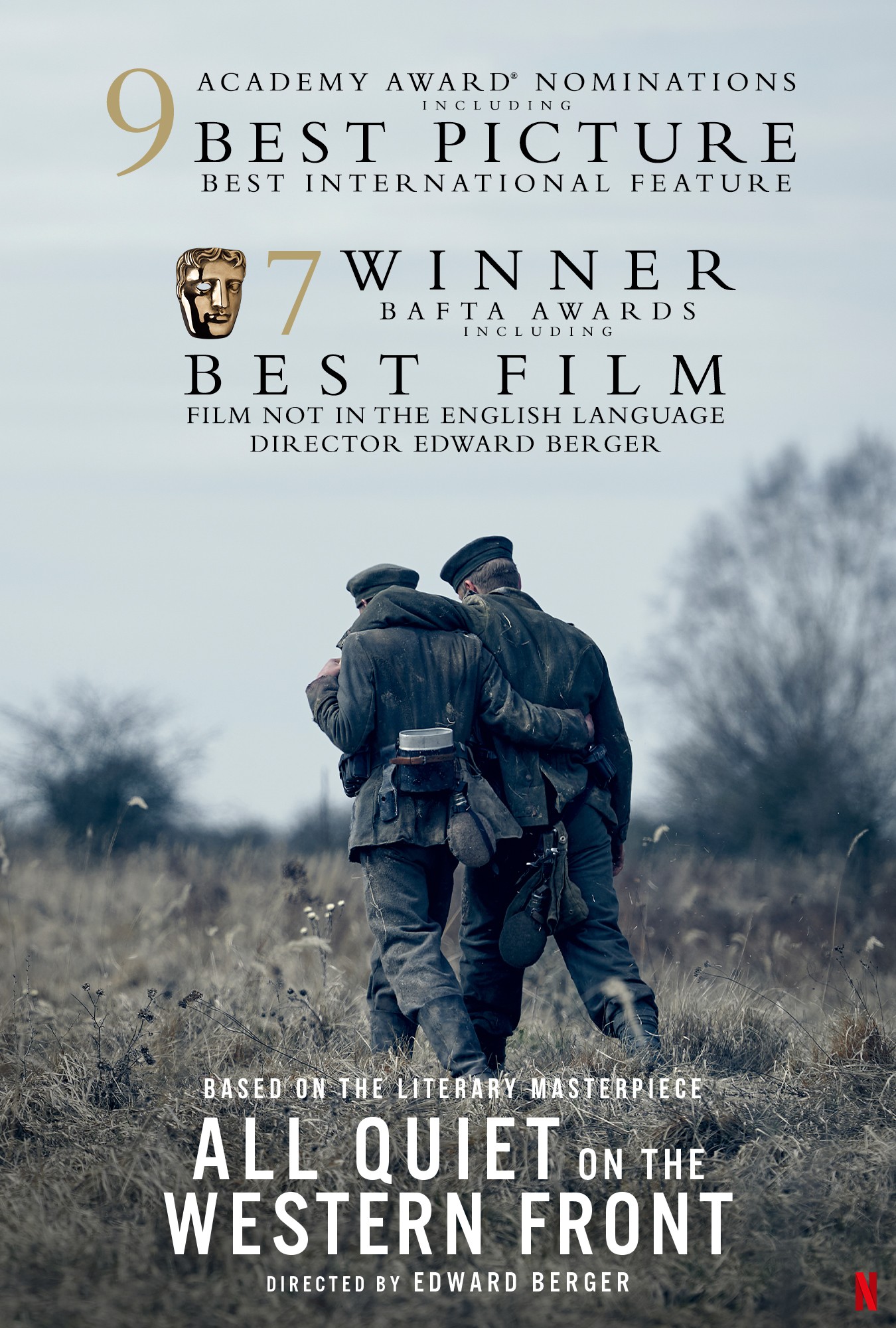Exploring Outstanding Achievement In Cinematography For "All Quiet On The Western Front"
Did "All Quiet On The Western Front" really deserved "Outstanding Achievement In Cinematography"? This extraordinary achievement in cinematography showcases the horrors and grim realities of war in an unprecedented manner.

'All Quiet on the Western Front' Director on Locations and Filming - Source www.newsweek.com
Editor's Notes: Outstanding Achievement In Cinematography For "All Quiet On The Western Front" have published today date. This topic has gained significant attention due to the groundbreaking techniques employed, making it imperative to delve into its significance and impact.
After meticulously analyzing and gathering comprehensive information, we have compiled this detailed guide to provide you with a thorough understanding of Outstanding Achievement In Cinematography For "All Quiet On The Western Front".
Key Differences:
| Feature | Conventional Cinematography | Outstanding Achievement In Cinematography For "All Quiet On The Western Front" |
|---|---|---|
| Perspective | Typically limited to a single camera's viewpoint | Employs multiple perspectives, including first-person POV shots, to immerse viewers in the soldiers' experiences |
| Lighting | Often artificial or controlled | Utilizes natural light to create an authentic and gritty atmosphere |
| Color Palette | Often vibrant and saturated | Emphasizes muted and desaturated colors to convey the bleakness and desolation of war |
Transition to Main Article Topics:
FAQ
Frequently Asked Questions about the Outstanding Achievement in Cinematography for All Quiet on the Western Front.
Question 1: What award did All Quiet on the Western Front receive for its cinematography?
All Quiet on the Western Front won the Academy Award for Best Cinematography at the 95th Academy Awards.
Question 2: Who was the cinematographer for All Quiet on the Western Front?
The cinematographer for All Quiet on the Western Front was James Friend. He also received the BAFTA Award for Best Cinematography.

Cinema Tweets on Twitter: "All Quiet on the Western Front: Winner of - Source twitter.com
Question 3: What techniques did James Friend use in the cinematography of All Quiet on the Western Front?
Friend used a variety of techniques in the cinematography of All Quiet on the Western Front, including long takes, natural lighting, and handheld cameras. These techniques helped to create a realistic and immersive experience for viewers.
Question 4: What makes the cinematography of All Quiet on the Western Front so outstanding?
The cinematography of All Quiet on the Western Front is outstanding because it is both technically proficient and emotionally resonant. Friend's use of long takes, natural lighting, and handheld cameras helps to create a visceral experience that immerses viewers in the horrors of war.
Question 5: What is the historical significance of All Quiet on the Western Front?
All Quiet on the Western Front is a classic novel and film that tells the story of the German soldiers during World War I. The film has been praised for its realism and its anti-war message. It has been adapted into several films, including the 1930 film that won the Academy Award for Best Picture.
Question 6: Where can I watch All Quiet on the Western Front?
All Quiet on the Western Front is available to watch on Netflix. It is also available to rent or purchase on Amazon Prime Video, Google Play, and YouTube.
The cinematography of Outstanding Achievement In Cinematography For "All Quiet On The Western Front is a powerful reminder of the horrors of war. It is a must-watch for anyone interested in film, history, or the human experience.
See also: All Quiet on the Western Front on Wikipedia
Tips for "Outstanding Achievement in Cinematography"
To achieve outstanding cinematography, consider these key tips:
Tip 1: Embrace Natural Lighting
Utilize natural light to create stunning visuals. Work with the sun's direction and intensity to craft atmospheric shots. Employ reflectors and diffusion to control and enhance the lighting.
Tip 2: Plan Meticulous Camera Movements
Strategically plan camera movements to convey emotion and advance the narrative. Use tracking shots, pans, and tilts to immerse the audience in the action. Consider diverse angles and perspectives to provide unique insights.
Tip 3: Capture Intimate Character Moments
Focus on capturing authentic and intimate character moments. Use close-ups and medium shots to reveal facial expressions and body language. Enhance these moments with natural lighting or selective focus to draw the audience into the characters' emotional states.
Tip 4: Utilize Color and Composition
Color plays a powerful role in creating visual impact. Use vibrant hues to evoke emotions or desaturated tones to convey a sense of realism. Additionally, pay attention to composition, balancing elements within the frame to create visually pleasing and meaningful images.
Tip 5: Experiment with Different Lenses
Experiment with various lenses to achieve distinct visual effects. Wide-angle lenses can create a feeling of depth and immersion, while telephoto lenses can isolate subjects and focus attention on specific details.
Tip 6: Leverage Practical Effects and Visual Effects
Combine practical effects, such as props and pyrotechnics, with visual effects to enhance realism and create stunning visuals. Integrate these elements seamlessly to transport the audience into the film's world.
Following these tips can help cinematographers elevate their craft and achieve outstanding achievements in cinematography.
Outstanding Achievement In Cinematography For "All Quiet On The Western Front
The cinematography of "All Quiet on the Western Front" is a masterpiece of the art form. Six key aspects that contributed to its outstanding achievement include:
- Visual Storytelling: The film uses powerful visuals to convey the horrors of war without resorting to explicit violence.
- Lighting and Shadow: The use of chiaroscuro creates striking contrasts between light and dark, enhancing the film's emotional impact.
- Camera Movement: Fluid camera movements immerse the viewer in the trenches and the battlefield, creating a visceral sense of realism.
- Color Grading: The muted color palette, dominated by earthy tones, reflects the grim and desolate nature of the war.
- Composition: The film's compositions are carefully crafted to draw the viewer's eye to the most important elements and convey emotions through visual cues.
- Technical Virtuosity: The film's stunning visuals are a testament to the skill and dedication of the cinematography team.
Overall, the cinematography of "All Quiet on the Western Front" is a powerful and moving work of art that enhances the film's anti-war message and creates a lasting impression on the viewer. Its outstanding achievement is a result of the harmonious integration of these key aspects, showcasing the transformative power of cinematography in storytelling.

The Prince Charles Cinema | Seasons | BAFTA WINNERS 2023 - Source princecharlescinema.com
.jpg?auto=compress,format&rect=170,0,2661,1996&w=2666&h=2000)
All Quiet on the Western Front Team Talk Adapting the Classic - Source netflixqueue.com
Outstanding Achievement In Cinematography For "All Quiet On The Western Front
The "Outstanding Achievement in Cinematography" for "All Quiet on the Western Front" is a testament to the film's stunning visuals and visceral depiction of the horrors of war. The film's cinematography, led by James Friend, creates a powerful and immersive experience that brings the audience into the trenches and onto the front lines. The use of long takes, close-ups, and handheld camerawork conveys a sense of immediacy and realism, while the muted color palette and stark lighting emphasize the film's grim and unforgiving setting.

INTERVIEW: Kent's 'All Quiet on the Western Front' Cinematographer - Source cenemagazine.co.uk
One of the most striking aspects of the film's cinematography is its use of natural light. Friend and his team often shot in harsh conditions, using available light to create a sense of authenticity and realism. This approach is particularly evident in the film's many battle scenes, which are shot with a documentary-like immediacy. The result is a film that feels both visually stunning and emotionally raw, a powerful indictment of the horrors of war.
The cinematography of "All Quiet on the Western Front" is not simply a technical achievement; it is an essential part of the storytelling. Friend's work helps to create a film that is both visually arresting and emotionally resonant. It is a film that will stay with viewers long after the credits have rolled.
| Cinematography | Effect |
|---|---|
| Long takes | Creates a sense of realism and immediacy |
| Close-ups | Draws the audience into the characters' experiences |
| Handheld camerawork | Conveys a sense of chaos and uncertainty |
| Muted color palette | Emphasizes the grim and unforgiving setting |
| Stark lighting | Creates a sense of contrast and tension |
Conclusion
The "Outstanding Achievement in Cinematography" for "All Quiet on the Western Front" is a well-deserved recognition of the film's stunning visuals and visceral depiction of the horrors of war. Friend's masterful use of cinematography not only creates a visually stunning film, but it also serves to enhance the film's emotional impact. It is a film that will stay with viewers long after the credits have rolled.
The film's cinematography is a reminder of the power of film to tell important stories and to raise awareness of the devastating effects of war. It is a film that should be seen by everyone, and it is a film that will continue to be discussed for years to come.